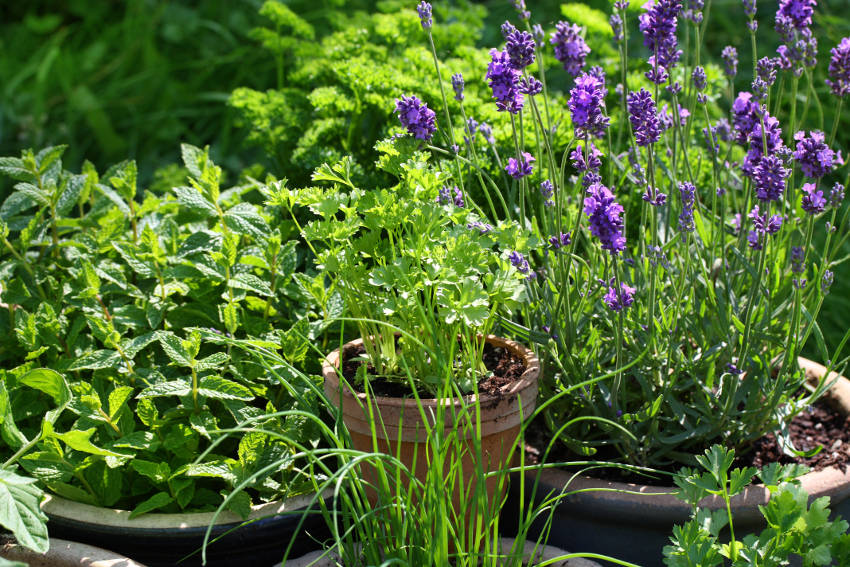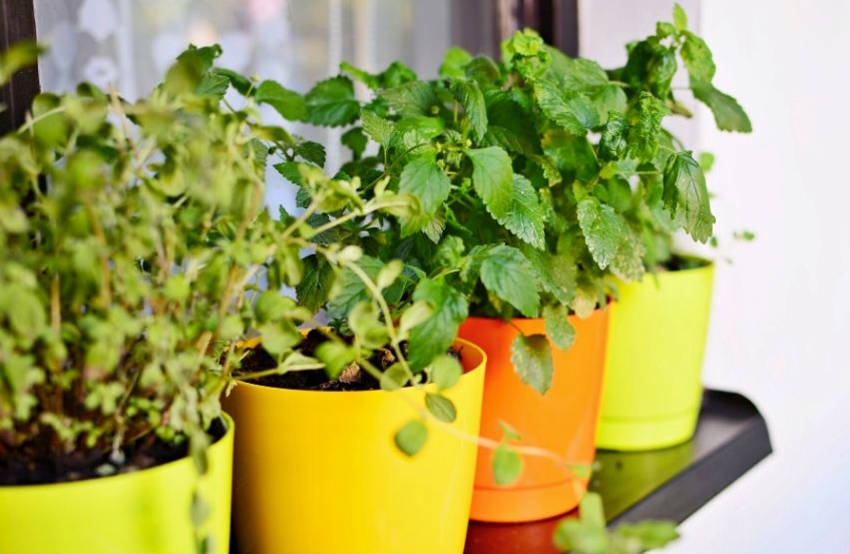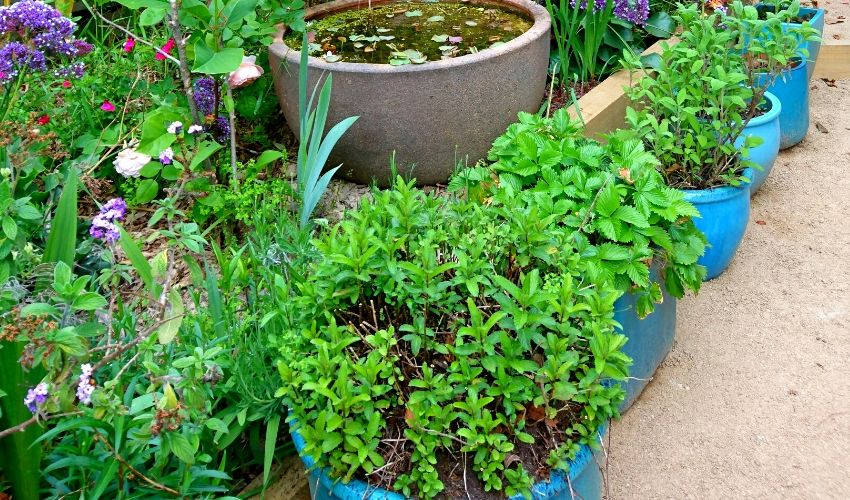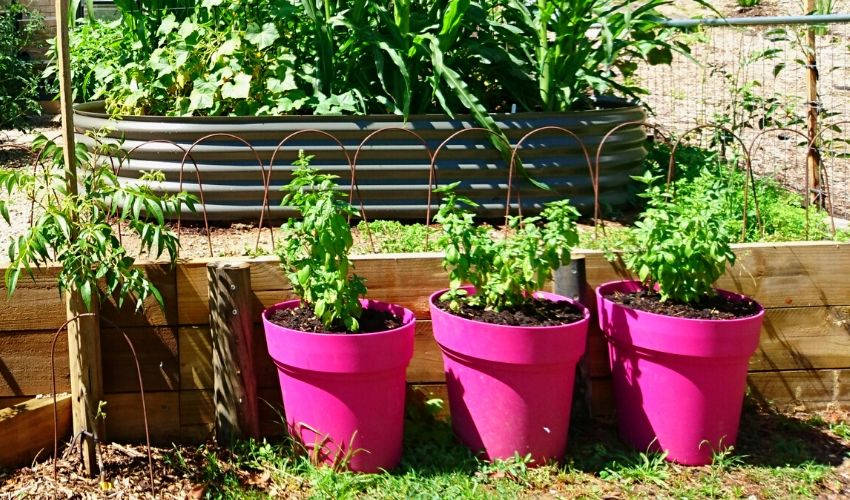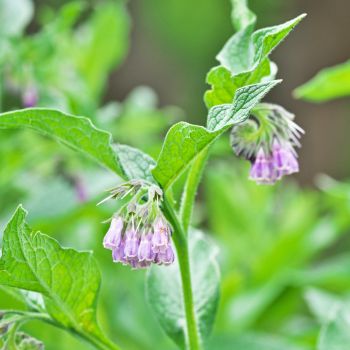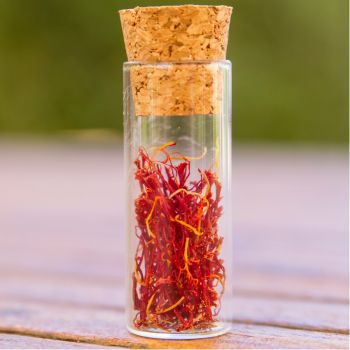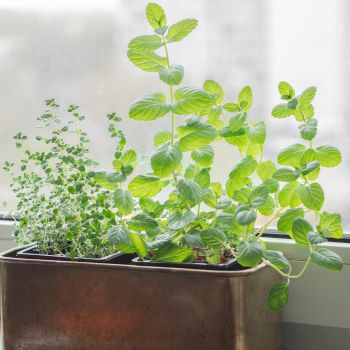Fresh herbs make an amazing difference to your kitchen adventures. But you don't need to visit the grocery store evertime time you need a bunch of basil. Growing your own herbs in containers is easier than you probably think, especially if you keep these five simple tips in mind.
1) Take Care Over-Watering
Different herbs need different amounts of water to flourish. Lush, leafy ones like basil and coriander are more thirsty than tougher, smaller-leafed kinds like thyme or rosemary. For each herb you want to grow, check out how much watering it's likely to need, and plant similar herbs next to each other to make this easier to control.
Importantly, don't over-water your herbs. If the soil becomes waterlogged, which is very easy in containers, the roots will be deprived of oxygen and your plants will drown.
2) Give Them Enough Sun
Some herbs such as parsley or chervil can get by on only a little sunlight, but these shade-friendly varieties are very much the exception. Place your containers where they'll get at least three hours of direct light on a sunny day, and ideally six hours or more.
3) Don't Overcrowd
The bunches of herbs you buy in grocery stores can give you a misleading impression about what a plant should look like. With herbs such as basil or parsley, you're usually not buying a single bushy plant, but lots of immature stems crowded together. When growing your own herbs, give each plant plenty of space to spread out. You'll get many more leaves in total over a much longer life.
4) Keep Mints Apart
The world of fresh mint offers many tantalising varieties, including favourites like peppermint, spearmint and lemon balm. If you love mint's fresh, revitalising flavor, it's fun to grow as many different varieties as you can find.
However, don't plant two different types in the same container, as their root systems will intermingle. Over time, you'll end up with a cross-variety of mint that muddies their identities.
Although this is the most important with mint, the same applies to many herbs. To keep two varieties of the same species tasting true, don't plant them too close to each other.
5) Pay Attention to Feeding
Lastly, when you're growing herbs in containers you need to think about nutrient levels in the soil. For annuals like basil or dill, use a fresh compost when you are sowing new seeds each year to ensure healthy growth and to keep diseases in check.
For perennials like oregano or rosemary, it's important keep the soil nutritious from year to year. Either refresh your pots each spring by adding a fresh layer of rich compost to the top, or if your pot is full to the brim, repot with a complete change of compost.
Alternatively, use a commercial plant food to replenish the soil's nutrients. However, choose one specifically formulated for herbs, and feed with a light touch. Overdoing fertiliser in a container will make your herbs grow quickly, but with low levels of the essential oils responsible for flavor.
If you catch the herb gardening bug, there are hundreds of varieties to explore giving years of enjoyment. But starting out on a smaller scale is easy if you follow these five simple tips.
